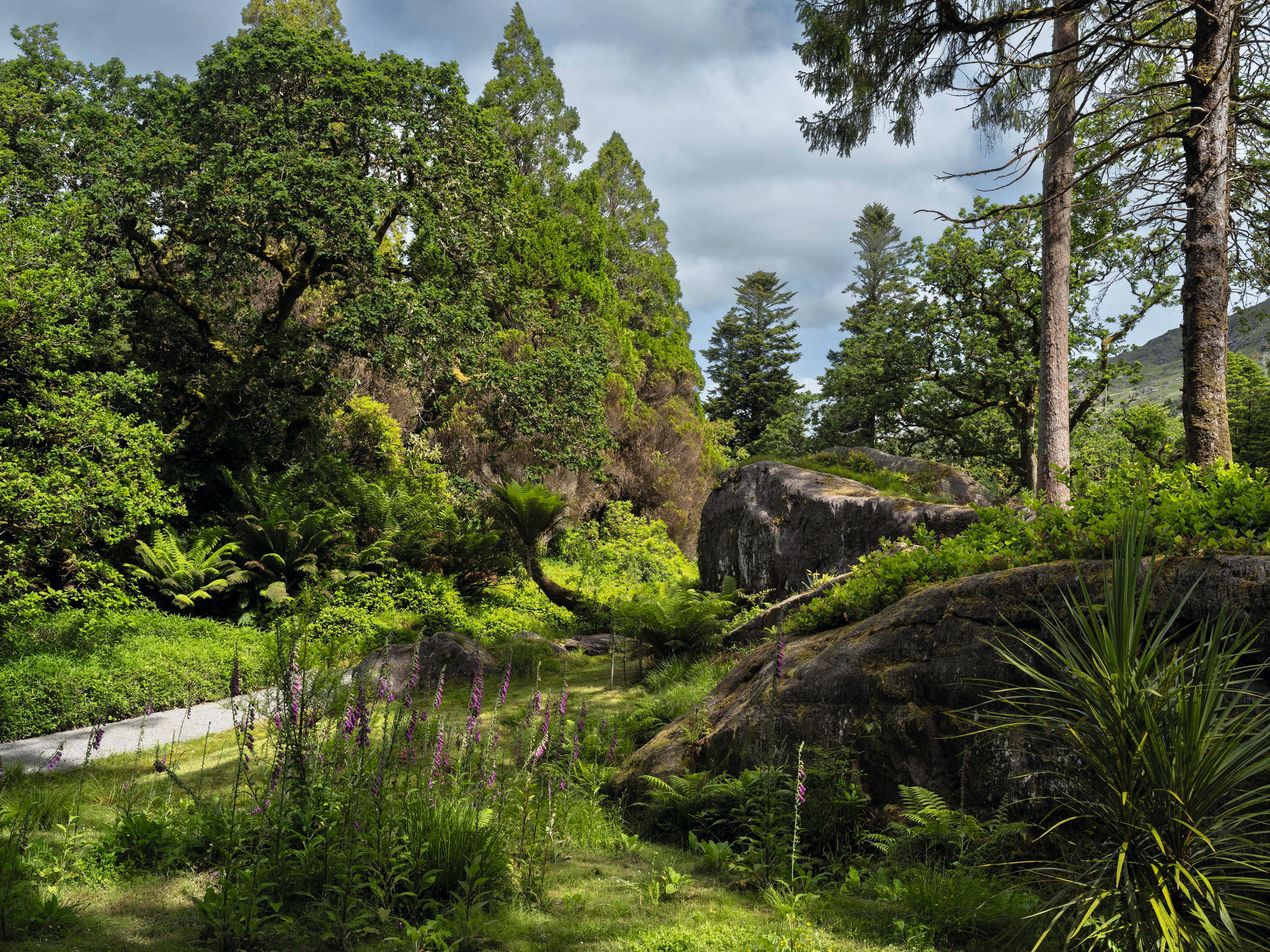Country houses in East Anglia
These East Anglian properties have individual charms, says Penny Churchill.


The countryside of East Anglia is strewn with the monuments and houses of colourful characters who have changed the course of history?from Boudicca and Mary Tudor, to Wolsey, Cromwell, Nelson and the steely Dukes of Norfolk. Now, an impressive brochure announcing the sale of historic, Grade II*-listed Loudham Hall, near Wickham Market, Suffolk?through Savills (01473 234800) at a guide price of £6 million?suggests that the name of flamboyant art collector, style guru and interior decorator Keith Skeel, whose 'Suffolk residence' this is, should probably be added to the list. The contents of the house, including Mr Skeel's vast private collection of 'fabulous, quirky and unique antiques and decorative objects' will be sold at the hall by Edinburgh auctioneers Lyon & Turnbull (0131?557 8844) on June 1, 2 and 3. Loudham Hall was built for the Loudham family in the 15th century and substantially altered in about 1750, when Charles Wood inherited the house on the death of the Duke of Southampton. For Keith Skeel, who also has homes in New York and Cape Town, the great outbuildings and vast galleried hall and landing where the 18th-century nobility 'strutted their stuff' provided the perfect background for his collection of over-sized furniture, paintings, mirrors and statuary. Everything at Loudham Hall is larger than life, from the 14,329sq ft main house with its great halls, five grand reception rooms, state gallery, eight main bedrooms and five bathrooms to its vast barns and outbuildings?all currently crammed with antiques and objets d'art. The hall comes with five cottages and 69 acres of gardens, woods, parkland and paddocks, home to llamas, highland cattle, horses and white rheas. Unlike Mr Skeel, most buyers moving to East Anglia will be looking for something less monumental?ideally, a small manor house, an old rectory or a traditional family farmhouse, the demand for which currently far outstrips the supply. A fact reflected in the £2.5m guide price quoted by the Bury St Edmunds office of Jackson-Stops & Staff (01284 700535) for Felsham House at Felsham, eight miles from Bury, which was built in the mid-1800s by the Rev Thomas Anderson, rector of Felsham, for his son, John Thomas Anderson, QC. In 1964, Felsham House was bought by the Hon David Erskine, a military and naval historian, who became a JP and Deputy Lieutenant for Suffolk. With the help of Ipswich-based architect Peter Cleverly, David Erskine and his wife, Jean, modernised and extended the house. The Adam fireplace in the drawing room came from Mrs Erskine's Glasgow family home, and that in the sitting room is thought to have come from the London home of the Marquess of Bristol at 6, St James Square, where David Erskine was born. Rambling Felsham House has accommodation on three floors including five main reception rooms, nine bedrooms and four bathrooms, plus two three-bedroom Victorian cottages and about 25 acres of gardens and grounds. Still in Suffolk, the Ipswich office of Strutt & Parker (01473 214841) has just launched Moat Farm House at Burgh, near Woodbridge, with a guide price of £1.7m. Recently renovated throughout, the eight-bedroom Georgian farmhouse, listed Grade II, has a heated swimming pool, paddocks, traditional outbuildings and 4.5 acres of moated formal gardens. Across the county border in Norfolk, the rise and rise of prices paid for good village or country houses has been unrelenting, and villages within reach of the north Norfolk coast and Gresham's School at Holt continue to command a premium. Savills recently agreed a sale at 'well above' the £1.25m guide price for historic Bolton House at Burnham Market?from which Nelson's daughter was married. Local agents Bedfords (01328 730500) are asking £875,000 for the late-16th-century, five-bedroom River House at Stiff-key, a mile inland from the coast, which was once part of Nathaniel Bacon's Stiffkey Old Hall estate, of which only one wing and a gatehouse now remain. Deeper into Norfolk, houses to the south and east of Norwich tend to be less dauntingly priced, although here too the trend is ever upwards. Savills (01603 229229) quote a guide price of £1.25m for elegant Gillingham House at Gillingham, near Beccles, on the Norfolk/Suffolk border. The delightful Regency former rectory has been extended more than once in its history, first of all by one of the rectors, who added an imposing reception room to improve the marriage prospects of his six daughters and was soundly admonished by his bishop for his lavish entertaining. The current owners, who bought Gillingham House in 1994, have extended the house to the east to create a much larger kitchen; the 5,674sq ft house, set in about two acres of mature wooded gardens and grounds, has three main reception rooms, five first-floor bedrooms, four bathrooms and further attic bedrooms. Strutt & Parker in Norwich (01603 617431) quote a guide price of £750,000 for the Grade II-listed Old Manor House in the small south Norfolk hamlet of Thelveton, three miles north of Diss. Built of mellow red brick under a Norfolk pantile roof, the house dates from the early 1500s, and has three reception rooms, six bedrooms and two bathrooms, a secluded private courtyard and an acre of pretty gardens and grounds. The eastern counties of England have had a long and proud association with the arts. Painters such as Constable and Gainsborough were inspired by the tranquility of the countryside, and countless writers have passed through the hallowed halls of Cambridge. This week sees the launch onto the market?through Bidwells (01223 841842) at a guide price of 'excess £3m'?of idyllic Duxford Mill on the River Cam at Duxford, seven miles south of Cambridge. The author Charles Kingsley was a keen fisherman, and during his days as an undergraduate at Magdalene College, would walk to Duxford Mill to fish in the pond for trout. After leaving Cambridge, he continued to visit his friend Charles Thurnall, who owned the mill, and is said to have written at least part of The Water Babies in the little room where he stayed, and which still exists. There have been mills on the site since Domesday, although the present mill buildings are said to date from the 18th and 19th centuries. In 1947, the present owner's father, Robert Lea, bought the mill in a derelict condition, restoring and converting the buildings to domestic use. The Grade II mill and mill house were substantially improved and extended in 1996; the accommodation includes four reception rooms, a study, a kitchen/breakfast room, master and guest suites, four further bedrooms and two further bathrooms, plus a four-bedroom staff house. The 10.7 acres of landscaped gardens, with the River Cam running through them, provide a spectacular setting for Duxford Mill, took 20 years to create and were designed for ease of maintenance. The house looks downstream towards the Regency temple, originally the burial place of the de Freville family which when threatened with demolition, was moved, stone by stone, from nearby Hinxton Hall. Upstream, more pools and waterfalls attract all kinds of fish and wildlife ?but no unwanted visitors, as, unusually, Duxford Mill has no public rights of way. Of all the eastern counties, Essex tends to come bottom of the league when it comes to recommending property hot-spots, yet north Essex in particular has some delightful rural villages, handily located less than an hour from the City by train or motorway. This week, Bidwells (01799 516688) are also launching Great Dawkins at Hempstead near Saffron Walden, Essex, on the market with a guide price of £1.3m for the 4,800sq ft, extended Victorian farmhouse with extensive equestrian facilities, and 3.5 acres of gardens and paddocks surrounded by open farmland.
Sign up for the Country Life Newsletter
Exquisite houses, the beauty of Nature, and how to get the most from your life, straight to your inbox.
Country Life is unlike any other magazine: the only glossy weekly on the newsstand and the only magazine that has been guest-edited by HRH The King not once, but twice. It is a celebration of modern rural life and all its diverse joys and pleasures — that was first published in Queen Victoria's Diamond Jubilee year. Our eclectic mixture of witty and informative content — from the most up-to-date property news and commentary and a coveted glimpse inside some of the UK's best houses and gardens, to gardening, the arts and interior design, written by experts in their field — still cannot be found in print or online, anywhere else.
-
 Everything you need to know about private jet travel and 10 rules to fly by
Everything you need to know about private jet travel and 10 rules to fly byDespite the monetary and environmental cost, the UK can now claim to be the private jet capital of Europe.
By Simon Mills Published
-
 'I'd willingly give a year of my life for a fortnight there': The green dream that is the garden of Derreen
'I'd willingly give a year of my life for a fortnight there': The green dream that is the garden of DerreenExotic woods, labyrinths of narrow, mossy paths and thousands of tree ferns make this an internationally important garden, writes Charles Quest-Ritson. Photographs by Jonathan Hession.
By Charles Quest-Ritson Published
